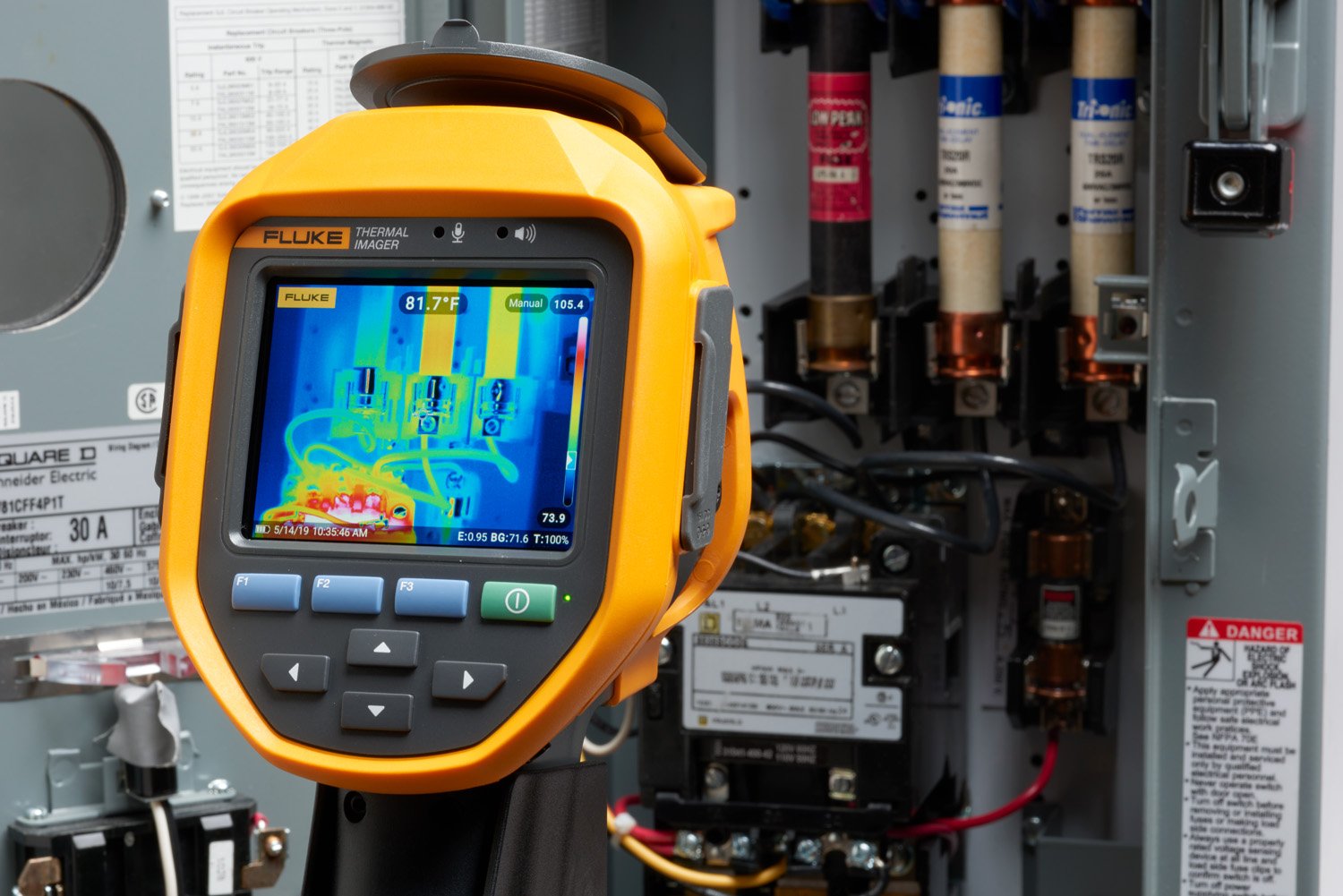Infrared cameras are ideal for finding apparent temperature differences between components or materials that can point to a potential problem. Whether you’re looking for hot or cold spots or the apparent surface temperature of a component or target area, using infrared cameras with advanced focus systems, IR-Fusion technology, color alarms, and user-defined spot markers help you find problems fast.
 The Fluke Ti480 PRO inspecting an electric panel
The Fluke Ti480 PRO inspecting an electric panel
Electrical Systems
Infrared cameras can capture thermal information without touching the target, making them a good choice for inspecting the integrity of electrical systems from a safe distance to diagnose:
- Unbalanced loads
- Possible harmonics issues
- Overloaded systems with excessive current
- Loose or corroded connections that cause increased resistance in the circuit
- Winding insulation failure in electric motors
- Component failure
- Wiring mistakes
- Underspecified components
Electromechanical systems
The non-contact temperature measurement capability of Fluke infrared cameras also makes them invaluable for inspecting motors, pumps, turbines, heat exchangers, gear boxes, and low-speed rotating equipment to find:
- Reduced airflow from dust or debris
- Alignment issues
- Motor winding insulation problems
- Power quality problems
- Bearing issues
- Lubrication problems
Process operations
Applications such as petroleum and chemical processing, or cement, plastic or steel manufacturing that involve extreme temperatures and potentially hazardous conditions can all benefit from the level of detail provided by high resolution infrared images which you can capture from a safe distance. You can capture even more detail from a further distance in hot or dangerous environments by adding a 2x or 4x telephoto lens. Using a Fluke infrared camera to inspect refractory structures, tanks, vessels, steam systems, and heaters and furnaces, can help you find:
- Damaged refractory insulation
- Worn or leaking pipes
- Defective valves and steam traps
- Abnormal heat flow and heat gradients
- Levels of solids, liquids, or gases in vessels such as storage tanks and silos
Building diagnostics
Thermal imaging has long been used for both residential and commercial building inspections to detect and diagnose:
- Improperly installed or missing insulation
- Heat loss or gain
- Air leakage and air bypasses
- Improperly installed or damaged HVAC ductwork
- Leaks in buried steam or water lines
- Moisture intrusion in walls, ceilings and roofs causing damage to insulation and building materials




